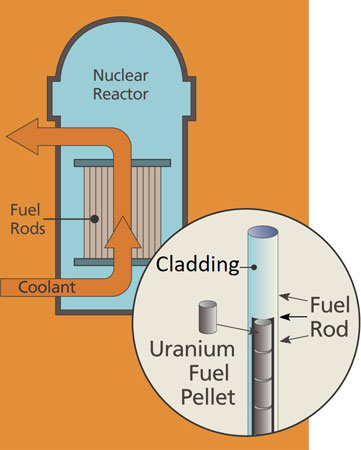Coated Cladding
This page includes links to files in non-HTML format. See Plugins, Viewers, and Other Tools for more information.
Coated cladding is one of the three near-term technologies being pursued by nuclear fuel vendors.

Historically, nuclear fuel for power reactors has consisted of zirconium alloy cladding with uranium dioxide fuel pellets. Nuclear fuel vendors are currently researching and testing fuel with the outside of the zirconium alloy cladding coated with a thin layer of either chromium or a proprietary material. The nuclear fuel vendors claim these coatings provide the following advantages:
- Enhanced protection of fuel rods against debris fretting
- Oxidation resistance and superior material behavior over a range of conditions
The NRC staff has been following the development of coated cladding designs and has completed several activities in preparation for coated cladding submittals. The staff, in coordination with the U.S. Department of Energy's Pacific Northwest National Lab produced a report exploring the degradation and failure phenomena of chromium-coated zirconium alloy cladding. This PIRT report was then used to develop interim staff guidance on how the NRC should review incoming applications.
Coated cladding licensing actions received by the NRC can be found on the ATF-related licensing actions page.